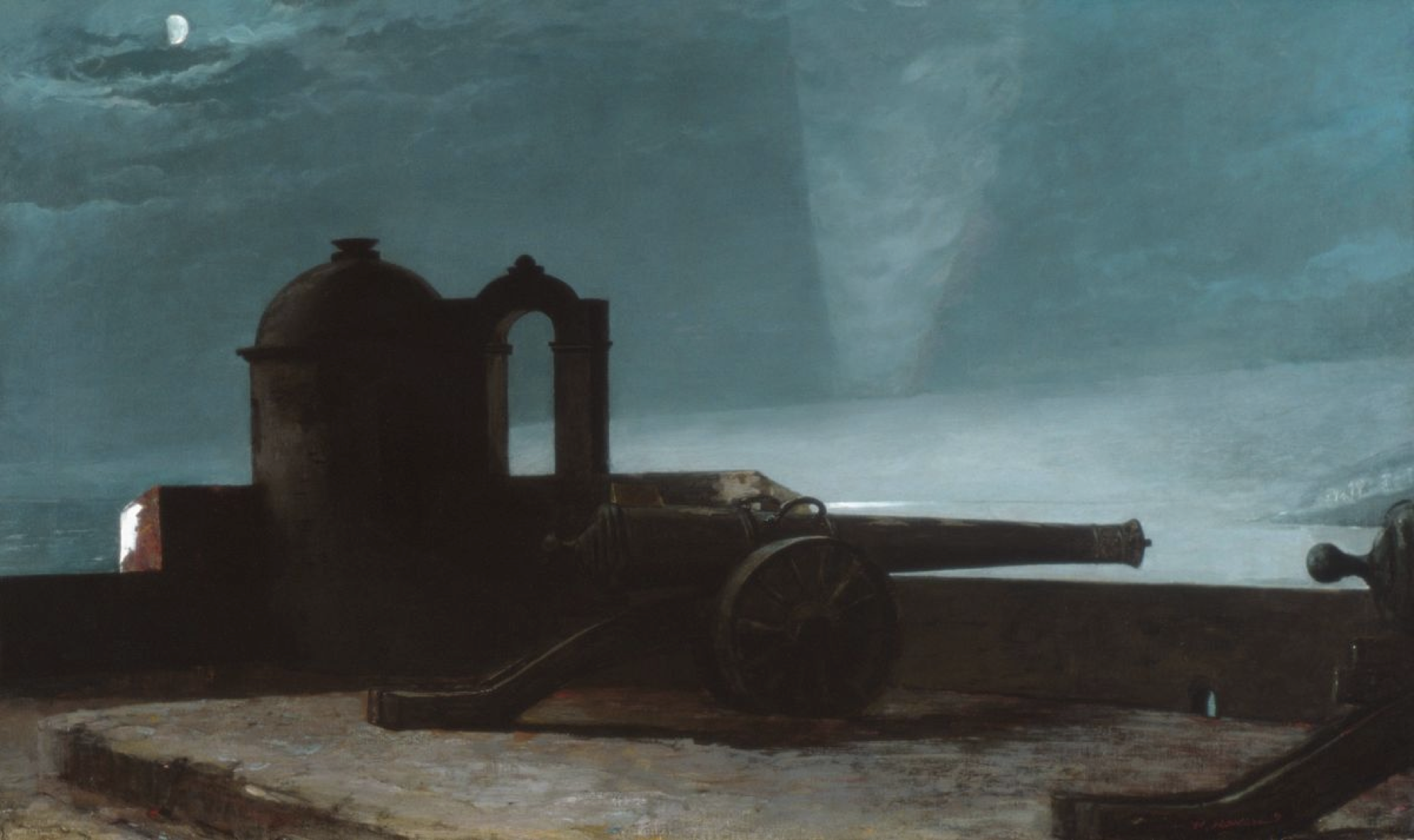
Winslow Homer (1836-1910), Searchlight on Harbor Entrance, Santiago de Cuba, 1902, Oil on canvas, Gift of George A. Hearn, 1906, The Metropolitan Museum of Art, New York (06.1282).
Monday, February 6, 2023 - 1:00pm
Dissertation Defense - Ramey Mize, "Battle Grounds: Painting, War, and Witness in the Americas, 1861–1902”
Meyerson Conference Room in the Van Pelt Library, 2nd Floor
The visual arts played a pivotal role in three wars that shaped U.S. history between 1861 and and the turn of the century: the Civil War, the Black Hills War, and the Spanish-Cuban-American War of 1898. This dissertation traces the historical and visual imbrications of campaigns for U.S. empire in its consideration of conflict imagery across these military engagements. Three case studies enable comparative analysis, which in turn helps to consolidate diverse visualizations of warfare into a coherent and revelatory corpus. Importantly, this project addresses the challenge of treating the field of American art history as hemispheric in its survey of varied but interrelated theaters of conflict. Select battle paintings form the fulcrum of each chapter and are interpreted as embedded in, rather than separate from, a profoundly innovative moment in visual culture.
This project puts forth a central argument: as U.S. war pictures mediated ongoing civil, colonial, and imperial violence through new pictorial forms in the late nineteenth century, representational truth claims became more pronounced. Amidst escalating associations between art and testimony, artists presented their war imagery as the product of “witness work”—a term I introduce and define as the range of artistic and discursive efforts to appropriate validity for iconic but mythologized events from Pickett’s Charge at Gettysburg and the Battle of the Little Bighorn to the Battles of Santiago and San Juan Hill. The performative witness process undergirding depictions of these historical events altered public understanding of them—obscuring the contribution of African Americans to the Gettysburg campaign, the right of Indigenous communities to defend their families and homelands against settler invasion, and the role of Cubans in their own revolution. Ultimately, Battle Grounds offers new, cross-cultural pathways for understanding the roles of art and witness during a period of immense turbulence throughout the Americas.

